
Hanoi: The Heart of Vietnam's Culture and History
Discover Hanoi, Vietnam's vibrant capital, where ancient traditions meet modern life. Explore historic temples, bustling markets, and serene lakes in this cultural hub.
Hanoi, the capital of Vietnam, is a city of contrasts and a blend of old and new. Walking through its bustling streets, you will encounter centuries-old temples, French colonial architecture, and modern skyscrapers. The city's rich history is palpable, with the Old Quarter's narrow alleyways offering a glimpse into its past. Here, street vendors sell everything from aromatic pho to intricate handicrafts, creating a vibrant and sensory-rich experience. Lakes and parks provide serene escapes from the urban hustle. Hoan Kiem Lake, located in the center of the city, is a peaceful spot surrounded by legends and history. It is a favorite among locals and tourists alike, especially in the early morning when you can see people practicing tai chi. Nearby, the Thang Long Water Puppet Theatre offers a unique cultural performance that has been a part of Vietnamese tradition for centuries. Hanoi is also a gateway to exploring Vietnam's rich cultural heritage. The city's many museums, such as the Vietnam Museum of Ethnology and the Ho Chi Minh Mausoleum, provide insights into the country's diverse history and the life of its revolutionary leader. The Temple of Literature, Vietnam's first university, is another must-visit, showcasing traditional Vietnamese architecture and Confucian heritage. Whether you are a history buff, a food lover, or an avid traveler, Hanoi has something to offer everyone.
Local tips in Hanoi
- Try the local street food, especially pho and banh mi, for an authentic taste of Hanoi.
- Visit Hoan Kiem Lake early in the morning to see locals practicing tai chi and enjoy a peaceful atmosphere.
- Explore the Old Quarter on foot to discover hidden gems and experience the vibrant street life.
- Attend a water puppet show at the Thang Long Water Puppet Theatre for a unique cultural experience.
- Make sure to visit the Temple of Literature for a deeper understanding of Vietnam's educational history.
Neighbourhoods in Hanoi
Hanoi: The Heart of Vietnam's Culture and History
Hanoi, the capital of Vietnam, is a city of contrasts and a blend of old and new. Walking through its bustling streets, you will encounter centuries-old temples, French colonial architecture, and modern skyscrapers. The city's rich history is palpable, with the Old Quarter's narrow alleyways offering a glimpse into its past. Here, street vendors sell everything from aromatic pho to intricate handicrafts, creating a vibrant and sensory-rich experience. Lakes and parks provide serene escapes from the urban hustle. Hoan Kiem Lake, located in the center of the city, is a peaceful spot surrounded by legends and history. It is a favorite among locals and tourists alike, especially in the early morning when you can see people practicing tai chi. Nearby, the Thang Long Water Puppet Theatre offers a unique cultural performance that has been a part of Vietnamese tradition for centuries. Hanoi is also a gateway to exploring Vietnam's rich cultural heritage. The city's many museums, such as the Vietnam Museum of Ethnology and the Ho Chi Minh Mausoleum, provide insights into the country's diverse history and the life of its revolutionary leader. The Temple of Literature, Vietnam's first university, is another must-visit, showcasing traditional Vietnamese architecture and Confucian heritage. Whether you are a history buff, a food lover, or an avid traveler, Hanoi has something to offer everyone.
When is the best time to go to Hanoi?
Iconic landmarks you can’t miss
Hanoi Opera House
Experience the grandeur of the Hanoi Opera House, a historic venue for performing arts in Vietnam's vibrant capital, Hanoi.
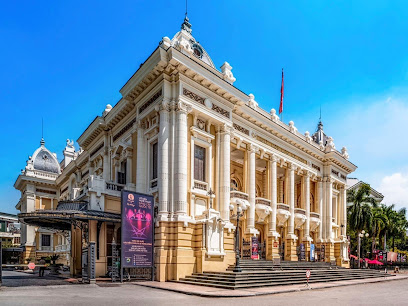
Ho Chi Minh's Mausoleum
Explore Ho Chi Minh's Mausoleum, a profound tribute to Vietnam's revolutionary leader, set in serene gardens and rich history in Hanoi.
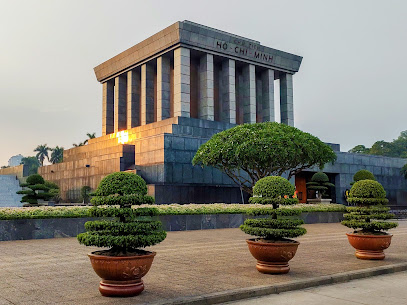
Temple Of Literature
Explore the Temple of Literature in Hanoi, Vietnam, a historic site that celebrates the nation's rich educational and cultural heritage amidst serene gardens.

Imperial Citadel of Thang Long
Immerse yourself in the rich history of Vietnam at the Imperial Citadel of Thang Long, a UNESCO World Heritage Site in the heart of Hanoi.

Hoa Lo Prison Relic
Explore the profound history of Hoa Lo Prison Relic in Hanoi, a powerful museum that reveals Vietnam's struggle for freedom and justice.

Hoan Kiem Lake
Explore the enchanting Hoan Kiem Lake in Hanoi, where history meets tranquility amidst the bustling city life.
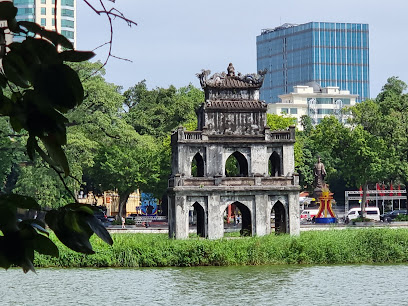
Vietnam Museum of Ethnology
Explore the cultural diversity of Vietnam at the Vietnam Museum of Ethnology, featuring rich exhibits and authentic village replicas that celebrate the nation's ethnic heritage.
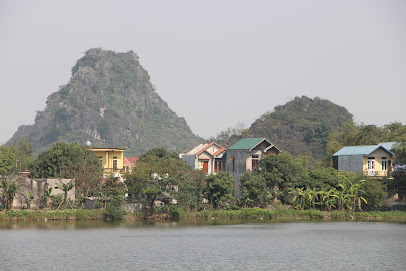
Tran Quoc Pagoda
Discover the tranquility and rich history of Tran Quoc Pagoda, the oldest Buddhist temple in Hanoi, set against the serene backdrop of West Lake.

Ngoc Son Temple
Discover the tranquility and cultural richness of Ngoc Son Temple, a historical gem nestled in the heart of Hanoi's Hoan Kiem Lake.

Dong Kinh Nghia Thuc Square
Experience the vibrant cultural heartbeat of Hanoi at Dong Kinh Nghia Thuc Square, where history, art, and community come together.
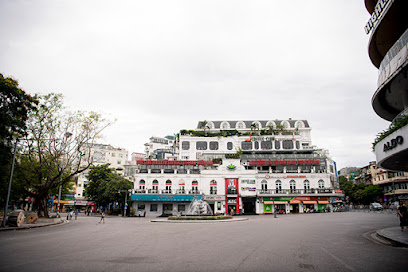
One Pillar Pagoda
Discover the beauty and spiritual significance of the One Pillar Pagoda, a must-see Buddhist temple in the heart of Hanoi, Vietnam.
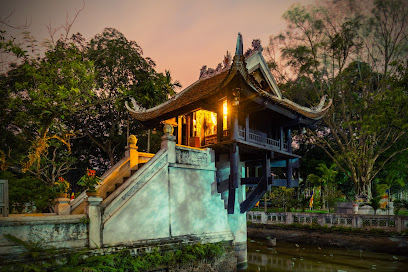
Emperor Ly Thai To Monument Statue
Explore the Emperor Ly Thai To Monument in Hanoi, a stunning tribute to Vietnam's heritage set amidst lush gardens and vibrant city life.
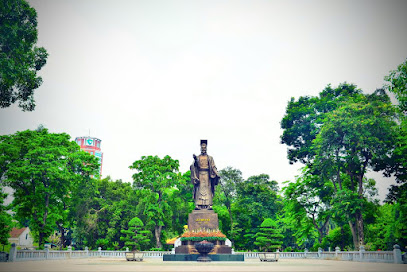
Vietnam - Soviet Friendship Palace of Culture and Labour
Discover the cultural legacy of Vietnam and the Soviet Union at the Friendship Palace of Culture and Labour, a vibrant symbol of historical ties.
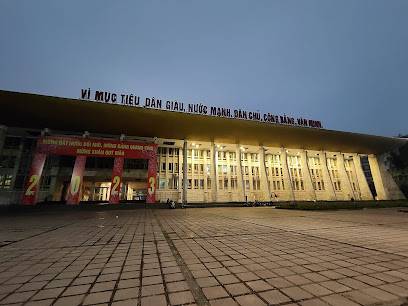
Old Quarter Ta Hien Corner
Experience the vibrant nightlife, delicious street food, and rich culture at Old Quarter Ta Hien Corner in Hanoi, Vietnam.
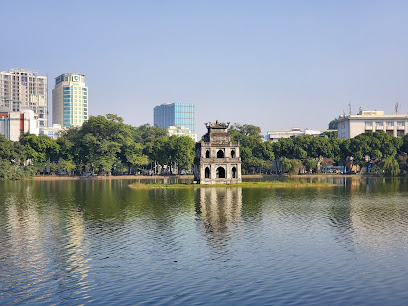
Hanoi Old Quarter
Discover the vibrant culture, rich history, and delectable cuisine of Hanoi Old Quarter, a must-visit destination for every traveler in Vietnam.
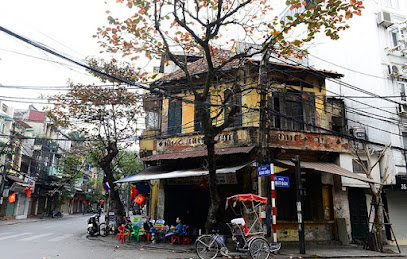
Unmissable attractions to see
Hanoi Opera House
Discover the Hanoi Opera House, a stunning cultural landmark offering enchanting performances and a glimpse into Vietnam's architectural heritage.

Hoa Lo Prison
Discover the haunting history of Hoa Lo Prison, a significant site that reveals Vietnam's struggle for freedom and resilience against oppression.

Temple Of Literature
Discover the Temple of Literature in Hanoi, a historic site that embodies Vietnam's educational heritage and rich cultural legacy.
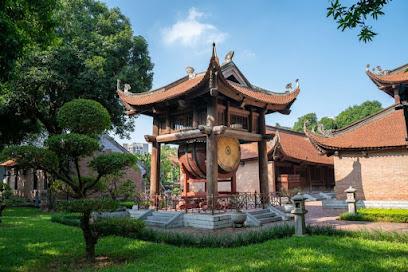
Thang Long Water Puppet Theatre
Explore the cultural heartbeat of Vietnam at Thang Long Water Puppet Theatre, where ancient traditions come alive in a stunning water performance.
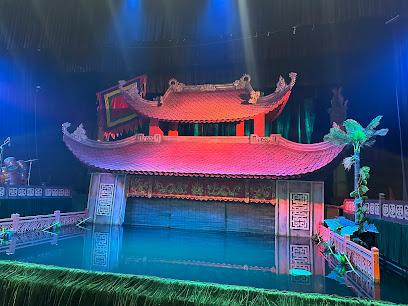
Thu Le Park
Explore the natural beauty and family-friendly attractions at Thu Le Park, a prime destination for relaxation and adventure in Hanoi.
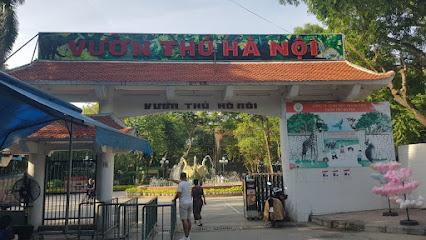
Thu Le Zoo
Explore the vibrant wildlife and lush gardens of Thu Le Zoo, Hanoi's premier destination for family fun and animal encounters.
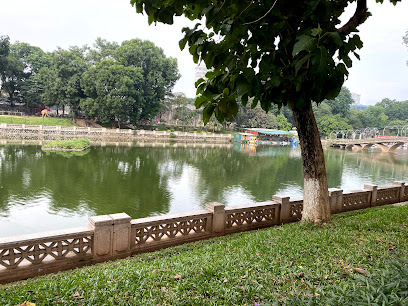
Vietnam Museum of Ethnology
Explore the rich cultural heritage of Vietnam at the Vietnam Museum of Ethnology, featuring diverse exhibits and immersive experiences from the country's 54 ethnic groups.
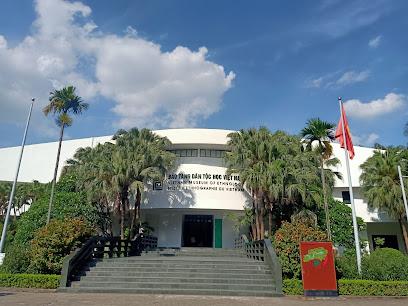
Ly Thai To Garden
Experience the serene beauty and rich history of Ly Thai To Garden, a tranquil oasis in the heart of Hanoi, Vietnam, perfect for relaxation and exploration.
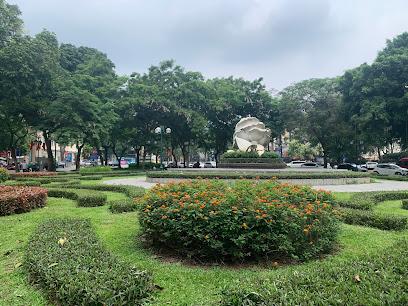
Công Viên Thiên Đường Bảo Sơn
Experience the exhilarating rides, lush gardens, and vibrant entertainment at Bảo Sơn Paradise Park, Hanoi's ultimate amusement destination.
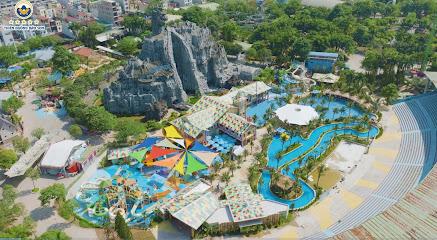
Hanoi Train Street
Discover the unique charm of Hanoi Train Street, where the rhythm of trains meets the pulse of local life in vibrant Hanoi.
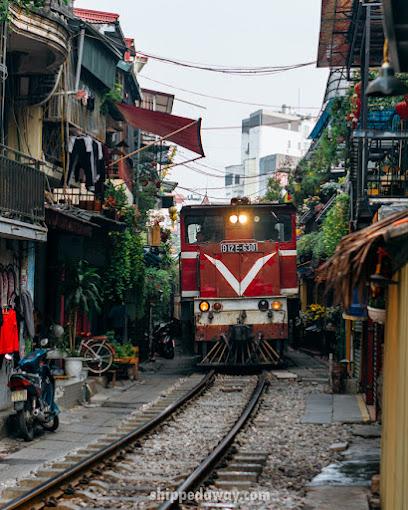
Serene Spa Hanoi
Discover ultimate relaxation at Serene Spa Hanoi, where rejuvenating treatments and tranquil ambiance await you in the heart of Vietnam's bustling capital.
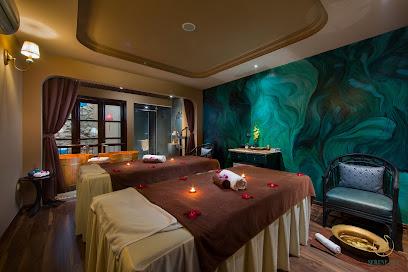
Ho Tay Water Park
Experience excitement and relaxation at Ho Tay Water Park, Hanoi's ultimate family-friendly destination with thrilling rides and beautiful scenery.
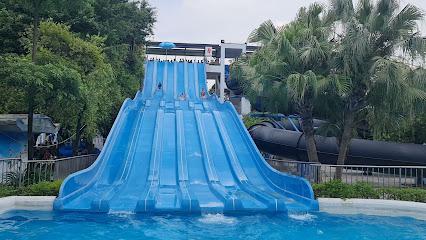
One Pillar Pagoda
Explore the serene beauty and cultural significance of the One Pillar Pagoda, a key landmark of Hanoi's Buddhist heritage.
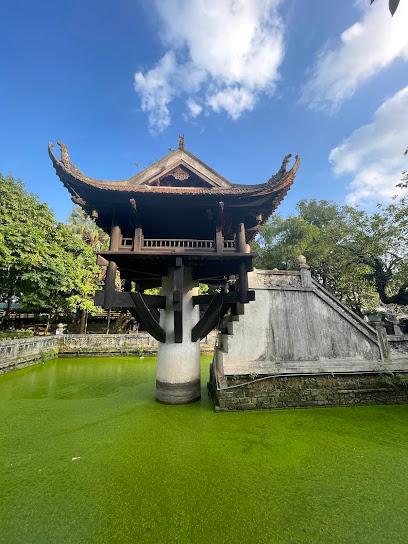
Ho Chi Minh Museum
Discover the rich history of Vietnam at the Ho Chi Minh Museum, where the legacy of a nation comes alive through inspiring exhibits and artifacts.
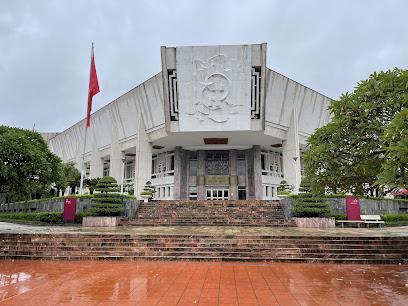
Vietnam Military History Museum
Delve into Vietnam's military past at the Vietnam Military History Museum, where history comes alive through engaging exhibits and artifacts.
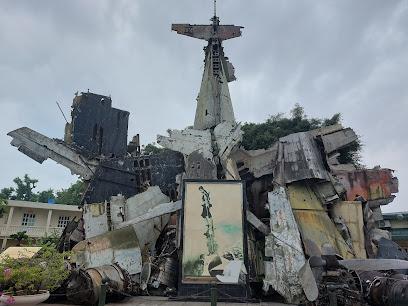
Essential places to dine
MẸT Vietnamese restaurant & Vegetarian Food 1
Experience authentic Vietnamese flavors at MẸT Restaurant in Hanoi - a culinary haven for both meat lovers and vegetarians.
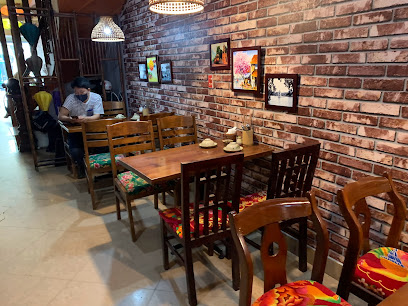
Banh Mi 25
Discover authentic Vietnamese flavors at Banh Mi 25 in Hanoi—home to delicious banh mi sandwiches made with fresh ingredients.
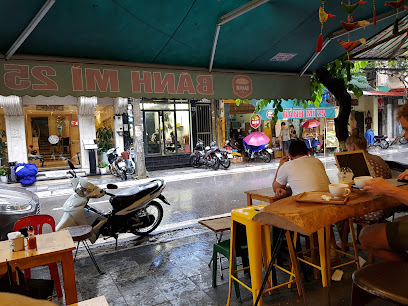
Hong Hoai's Restaurant
Experience authentic Vietnamese cuisine at Hong Hoai's Restaurant, where tradition meets innovation in every delicious dish.
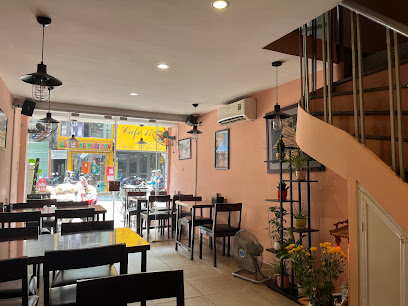
MẸT Vietnamese Restaurant & Vegetarian Met 2
Experience authentic Vietnamese cuisine at MẸT Restaurant & Vegetarian Met 2 in Hanoi - a perfect blend of tradition and flavor.
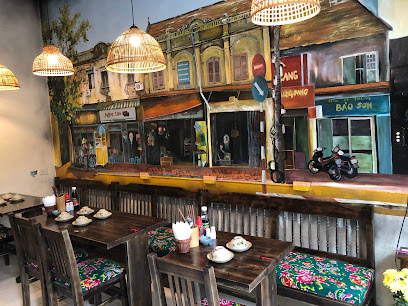
MẸT Vietnamese restaurant & Vegetarian Met 4
Experience authentic Vietnamese cuisine at MẸT Restaurant in Hanoi – a haven for vegetarians and food lovers alike.
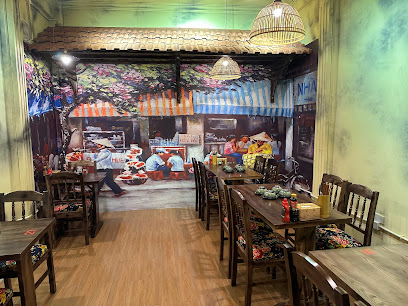
Tung's Kitchen
Discover authentic Vietnamese cuisine at Tung's Kitchen in Hanoi, where tradition meets modernity for an unforgettable dining experience.
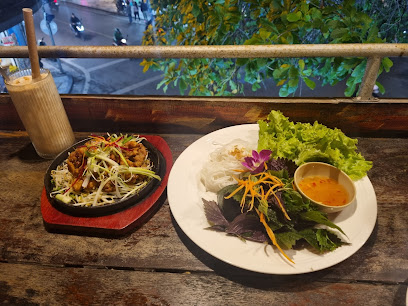
The Hanoi Social Club
Discover the heart of Hanoi at The Hanoi Social Club – where culinary delights meet vibrant culture in a cozy setting.
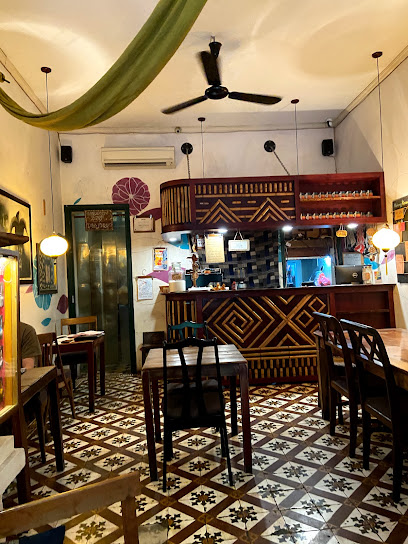
hàng quà Restaurant - Asian Fusion Food & Coffee
Discover the rich flavors of Asia at Hàng Quà Restaurant - your destination for exceptional Asian fusion food and coffee in the heart of Hanoi.
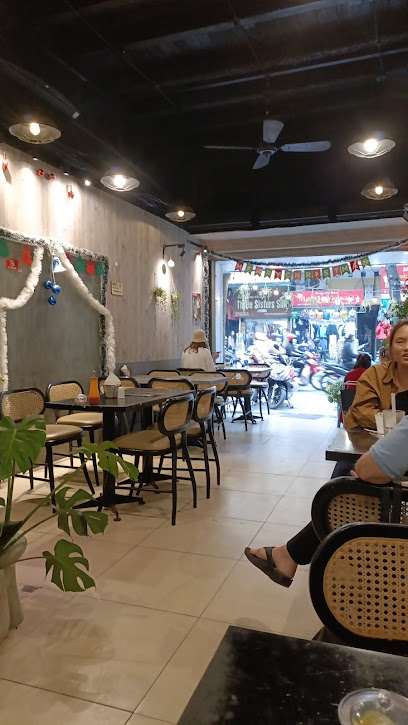
Essence Restaurant
Discover the flavors of Vietnam at Essence Restaurant – where traditional cuisine meets modern elegance in the heart of Hanoi.
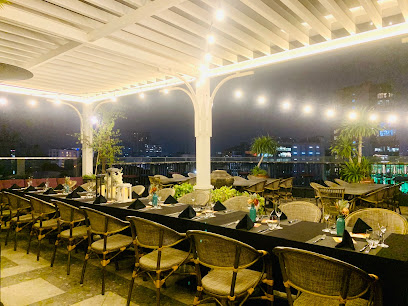
Oriana Vietnamese Restaurant and Vegetarian/Vegan Foods
Discover the authentic flavors of Vietnam at Oriana Vietnamese Restaurant – where vegetarian delights meet traditional culinary mastery.
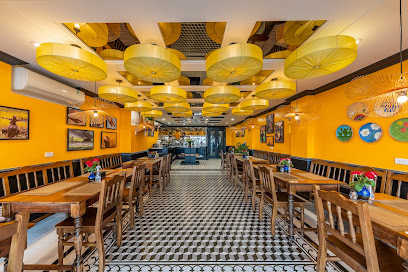
Hanoi Food Culture Restaurant & Cooking Class
Discover authentic Vietnamese flavors and enhance your culinary skills at Hanoi Food Culture Restaurant & Cooking Class.
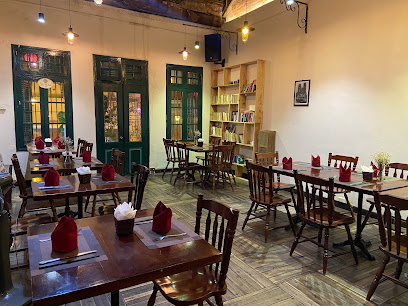
A New Day restaurant
Experience authentic Vietnamese cuisine at A New Day Restaurant in Hanoi - where tradition meets flavor in every dish.
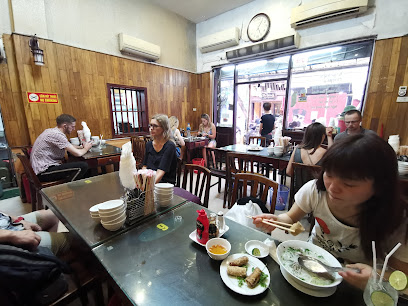
Katze Vegan & Vegetarian
Discover delicious vegan and vegetarian dishes at Katze Vegan & Vegetarian, where traditional Vietnamese flavors meet sustainable dining.
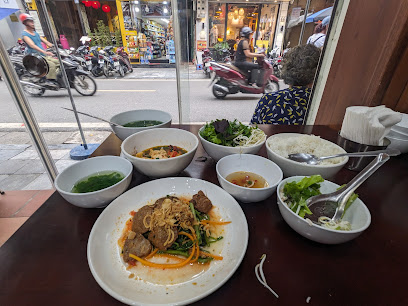
S&L's Diner Duong Thanh
Experience authentic American comfort food at S&L's Diner in Hanoi - where nostalgia meets culinary delight.
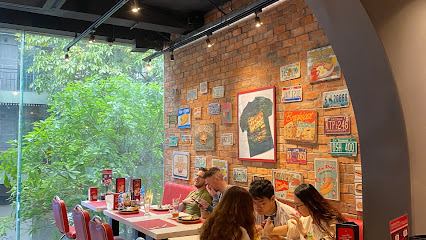
La Badiane
Experience the essence of French cuisine at La Badiane, Hanoi's premier destination for gourmet dining amidst an elegant ambiance.
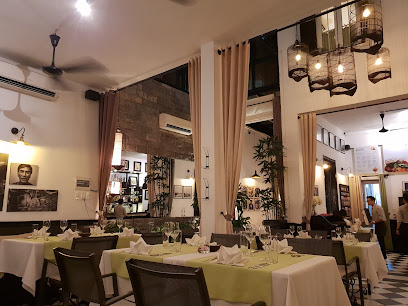
Markets, malls and hidden boutiques
Cartier - Trang Tien Plaza
Discover the elegance of Cartier at Trang Tien Plaza in Hanoi, where luxury jewelry, diamond pieces, and exquisite fashion accessories await.

Hang Da Market
Discover the bustling energy and local flavors at Hang Da Market, a must-visit shopping destination in the heart of Hanoi.
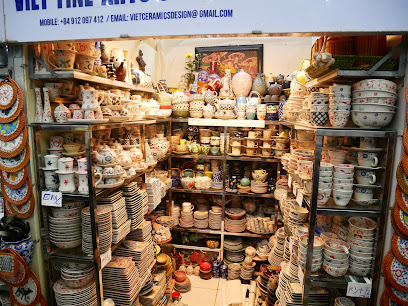
Trang Tien Plaza
Discover luxury shopping and exquisite dining at Trang Tien Plaza, the premier shopping destination in Hanoi, Vietnam.
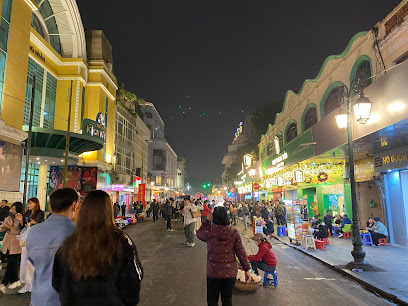
TiredCity 37 Hàng Hành
Explore TiredCity, Hanoi's premier gift shop for unique souvenirs and local crafts that embody the spirit of Vietnam.
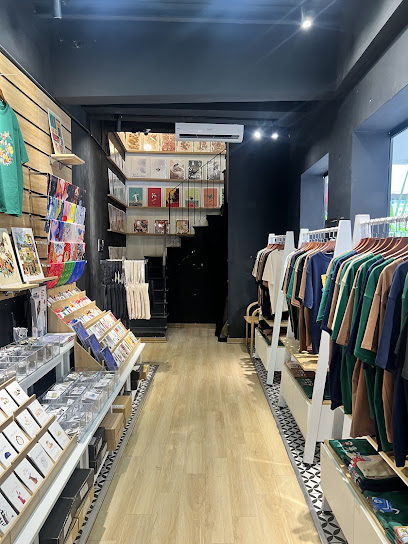
Phuong Noi Stationery & Souvenir Shop
Explore the vibrant essence of Vietnam at Phuong Noi Stationery & Souvenir Shop, where unique souvenirs and local artistry come together.
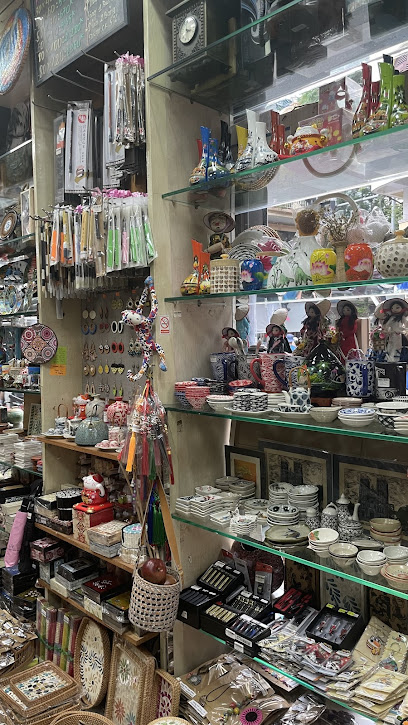
Night market
Experience the vibrant atmosphere of Hanoi Night Market, where culture, cuisine, and creativity come together in a delightful evening shopping adventure.
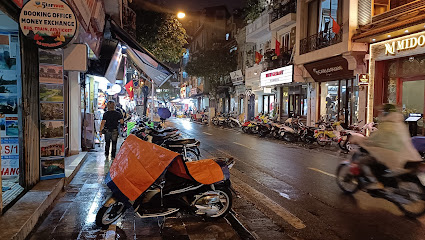
Collective Memory - The House of Curios
Explore a charming gift shop in Hanoi, filled with unique souvenirs, handcrafted candles, and vibrant posters, perfect for capturing memories.
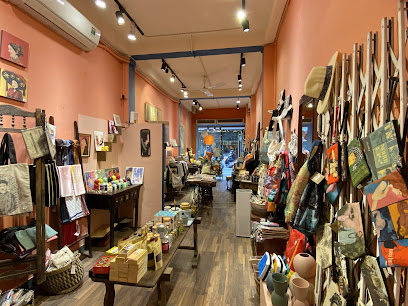
54 Traditions Gallery
Explore the rich tapestry of Vietnamese heritage at 54 Traditions Gallery, a captivating antique store in Hanoi's Ba Đình district.

Chăn Con Công - Vintage Store
Explore Chăn Con Công, Hanoi's vintage clothing store, where unique fashion meets local culture in a charming atmosphere.
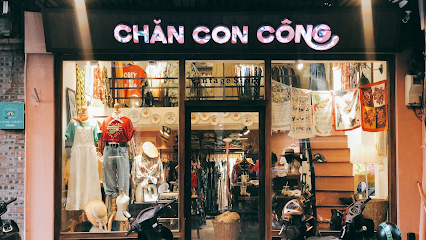
Shop Craft Link
Explore the rich heritage of Vietnam at Shop Craft Link, where every handcrafted piece tells a story of local artistry and culture.
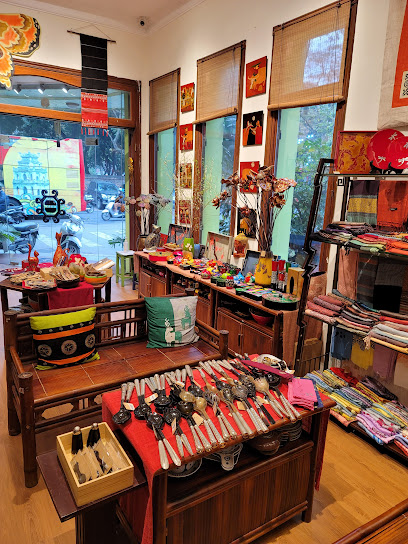
The Craft House Cathedral
Discover handcrafted souvenirs and unique gifts at The Craft House Cathedral, a charming shop in the heart of Hanoi, Vietnam.
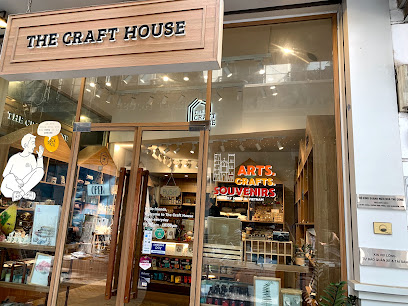
Flora Boutique
Explore Flora Boutique in Hanoi for a unique shopping experience featuring handcrafted Vietnamese treasures in the heart of the city.
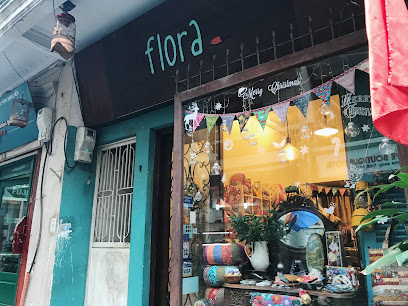
Indigo Store
Explore Indigo Store in Hanoi for unique clothing, fashion accessories, and organic products reflecting local culture and craftsmanship.
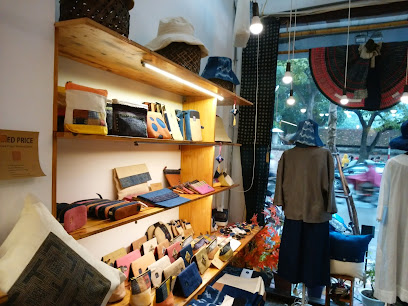
Mountain's Color Hà Nội handmade shop
Explore Mountain's Color, a hidden gem in Hanoi offering exquisite handmade gifts that embody the spirit of Vietnam's rich culture and artistry.
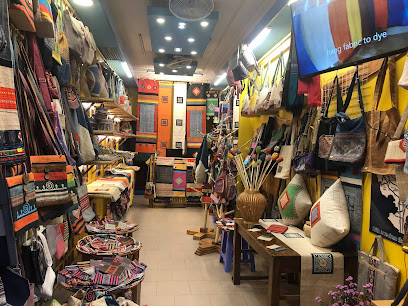
The Bamboo Shop
Explore The Bamboo Shop in Hanoi for unique gifts and authentic Vietnamese crafts that capture the essence of local artistry.

Essential bars & hidden hideouts
Cloud Sky Bar Hanoi
Cloud Sky Bar Hanoi offers stunning panoramic views of the city, exquisite cocktails, and a vibrant atmosphere for an unforgettable night out.
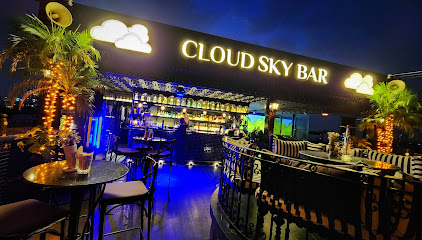
Polite & Co
Experience the artistry of cocktail crafting at Polite & Co, a charming bar in Hanoi's Hoàn Kiếm district, perfect for unwinding after a day of exploration.

Standing Bar
Experience the vibrant atmosphere of Standing Bar in Hanoi, a perfect spot for drinks, tasty food, and stunning lake views.
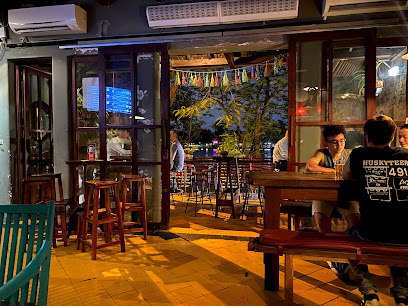
Nê Cocktail bar
Discover the vibrant atmosphere and unique cocktails at Nê Cocktail Bar, a must-visit nightlife spot in the heart of Hanoi.
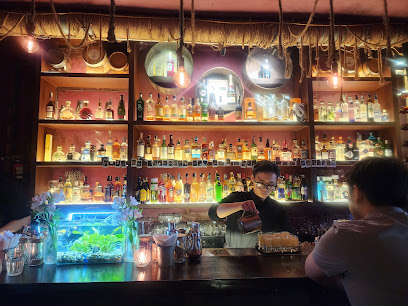
Moonlight Sky Bar
Experience breathtaking views and exquisite cocktails at Moonlight Sky Bar, the perfect rooftop retreat in the heart of Hanoi.
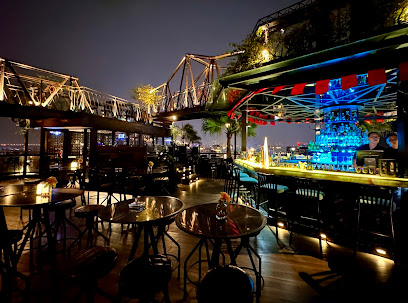
PRAGUE pub
Discover the allure of PRAGUE Pub, a cozy wine bar in Hanoi offering an exquisite selection of wines in a welcoming atmosphere.
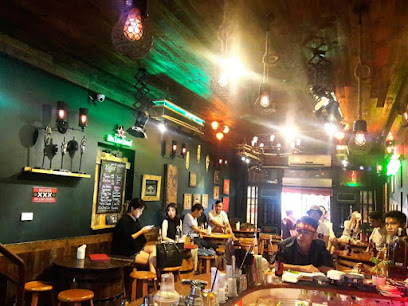
Hanoi ơi Bar Bistro
Experience the vibrant nightlife of Hanoi at Hanoi ơi Bar Bistro, where exceptional cocktails and a lively atmosphere await.
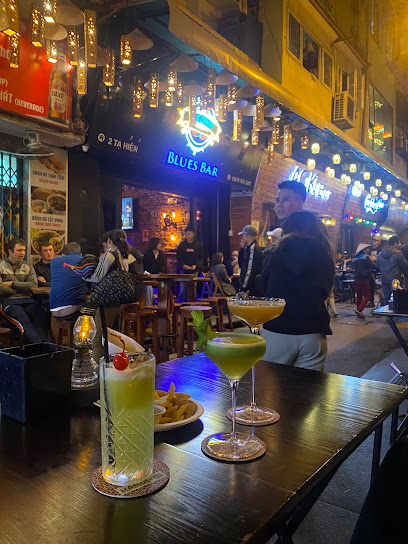
Factory 47
Experience the vibrant nightlife at Factory 47, a lively bar in Hanoi offering eclectic music and a wide selection of drinks in a welcoming atmosphere.
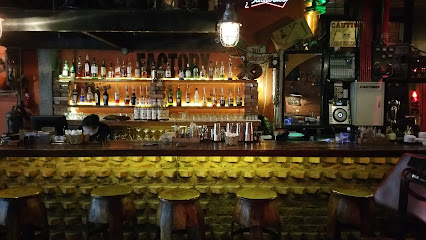
Tadioto
Discover Tadioto, Hanoi's vibrant bar and café offering creative cocktails, cozy ambiance, and a unique cultural experience in the heart of Vietnam.
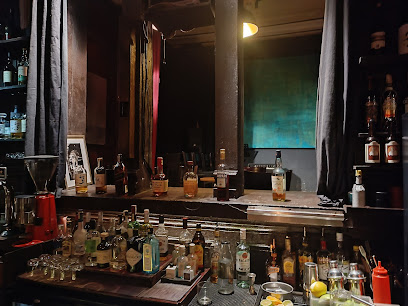
The Unicorn Pub
Discover The Unicorn Pub in Hanoi, where unique cocktails and a vibrant speakeasy atmosphere await every visitor.
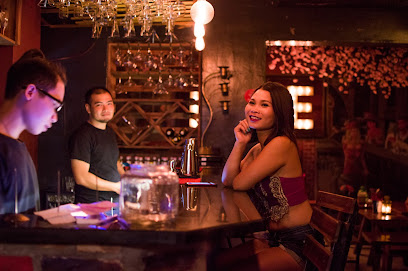
Lighthouse Sky Bar
Discover the breathtaking views and inventive cocktails at Lighthouse Sky Bar, a top destination for nightlife in the heart of Hanoi.
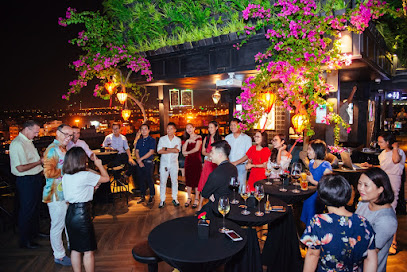
King Pirates Pub
Experience the vibrant nightlife at King Pirates Pub in Hanoi, where unique cocktails meet a lively atmosphere and unforgettable stories.
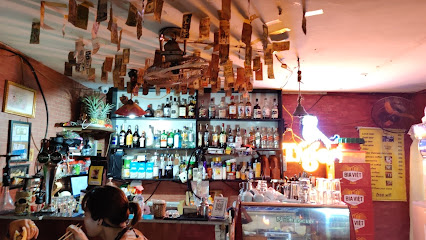
Terraço Sky Bar
Discover the magic of Hanoi's skyline at Terraço Sky Bar, where exquisite cocktails meet breathtaking views in a vibrant atmosphere.
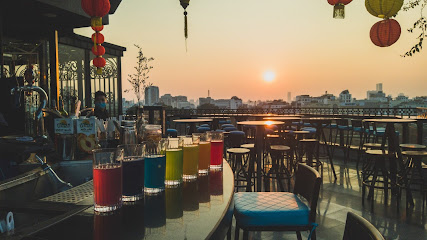
HIDDEN PUB HANOI
Discover the vibrant nightlife of Hanoi at Hidden Pub, a unique bar offering creative cocktails and a lively atmosphere in the heart of the city.
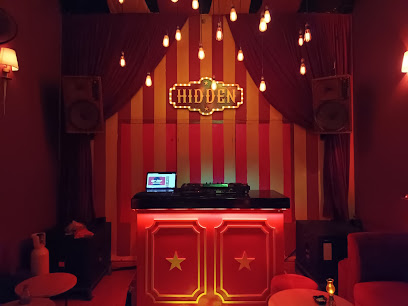
Nê Boong-ke
Discover Nê Boong-ke, a vibrant cocktail bar in Hanoi's Hoàn Kiếm district, offering innovative drinks and a chic atmosphere for the perfect night out.
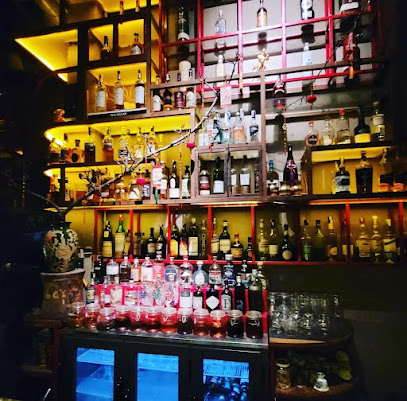
Local Phrases
-
- HelloXin chào
[sin chow] - GoodbyeTạm biệt
[tam byet] - YesCó
[koh] - NoKhông
[kohng] - Please/You're welcomeLàm ơn
[lam uhn] - Thank youCảm ơn
[kahm uhn] - Excuse me/SorryXin lỗi
[sin loy] - How are you?Bạn khỏe không?
[bahn kweh kohng?] - Fine. And you?Khỏe, còn bạn?
[kweh, kohn bahn?] - Do you speak English?Bạn có nói tiếng Anh không?
[bahn koh noy tyeng ahn kohng?] - I don't understandTôi không hiểu
[toy kohng hyehu]
- HelloXin chào
-
- I'd like to see the menu, pleaseTôi muốn xem menu, làm ơn
[toy muhn sem menoo, lam uhn] - I don't eat meatTôi không ăn thịt
[toy kohng an tit] - Cheers!Chúc sức khỏe!
[chook sook kweh] - I would like to pay, pleaseTôi muốn thanh toán, làm ơn
[toy muhn thanh toan, lam uhn]
- I'd like to see the menu, pleaseTôi muốn xem menu, làm ơn
-
- Help!Cứu!
[kyoo] - Go away!Đi ra!
[dee ra] - Call the Police!Gọi cảnh sát!
[goy kenh saht] - Call a doctor!Gọi bác sĩ!
[goy bahk see] - I'm lostTôi lạc đường
[toy lath doong] - I'm illTôi ốm
[toy ohm]
- Help!Cứu!
-
- I'd like to buy...Tôi muốn mua...
[toy muhn moo-ah] - I'm just lookingTôi chỉ xem thôi
[toy chee sem toy] - How much is it?Bao nhiêu tiền?
[bow nyew tyen?] - That's too expensiveĐắt quá
[daht kwah] - Can you lower the price?Có thể giảm giá không?
[koh tay zem zah kohng?]
- I'd like to buy...Tôi muốn mua...
-
- What time is it?Bây giờ là mấy giờ?
[bay zoh la mai zoh?] - It's one o'clockMột giờ
[moot zoh] - Half past (10)Mười giờ rưỡi
[mooee zoh ruh-oi] - MorningBuổi sáng
[bwoi sang] - AfternoonBuổi chiều
[bwoi chieu] - EveningBuổi tối
[bwoi toy] - YesterdayHôm qua
[hom kwah] - TodayHôm nay
[hom nai] - TomorrowNgày mai
[ngai my] - 1Một
[moot] - 2Hai
[hai] - 3Ba
[ba] - 4Bốn
[bon] - 5Năm
[nahm] - 6Sáu
[sow] - 7Bảy
[bai] - 8Tám
[tahm] - 9Chín
[cheen] - 10Mười
[mooee]
- What time is it?Bây giờ là mấy giờ?
-
- Where's a/the...?Chỗ...ở đâu?
[cho...uh dau?] - What's the address?Địa chỉ là gì?
[dia chee la zee?] - Can you show me (on the map)?Bạn có thể chỉ cho tôi (trên bản đồ) không?
[bahn koh tay chee chaw toy (trern bahn doh) kohng?] - When's the next (bus)?Khi nào là chuyến xe (buýt) kế tiếp?
[khee now la chuyen se (boot) keh tyep?] - A ticket (to ....)Một vé (đi...)
[moot vee (dee...)]
- Where's a/the...?Chỗ...ở đâu?
History of Hanoi
-
Hanoi, originally known as Thang Long, was founded in 1010 by Emperor Ly Thai To of the Ly Dynasty. Legend has it that the emperor saw a dragon ascending into the sky at this location, prompting him to establish the city and name it 'Ascending Dragon' or Thang Long.
-
Under the Ly and Tran Dynasties from the 11th to the 14th centuries, Hanoi flourished as a political and cultural center. The city saw the construction of many significant structures, including the Thang Long Imperial Citadel, which served as the political heart of the country.
-
In 1407, the Ming Dynasty from China invaded and occupied Hanoi, renaming it Dongguan. This period of occupation lasted until 1428, when Vietnamese forces led by Le Loi successfully expelled the Ming invaders, leading to the establishment of the Le Dynasty.
-
The Le Dynasty, particularly under the reign of Emperor Le Thanh Tong, marked a golden age for Hanoi. The city became a hub of education, culture, and commerce. Literature and the arts flourished, and the Temple of Literature, Vietnam's first national university, was established.
-
In the late 19th century, Hanoi fell under French colonial rule. The French significantly transformed the city, introducing Western architectural styles, building extensive infrastructure, and establishing Hanoi as the capital of French Indochina in 1902.
-
During World War II, Japanese forces occupied Hanoi from 1940 to 1945. This period was marked by hardship and famine. Following Japan's defeat, the Viet Minh, under the leadership of Ho Chi Minh, seized control of Hanoi and declared Vietnamese independence in 1945.
-
The declaration of independence led to the First Indochina War between the Viet Minh and the French. After years of conflict, the French were defeated at the Battle of Dien Bien Phu in 1954, and the Geneva Accords were signed, dividing Vietnam into North and South, with Hanoi as the capital of North Vietnam.
-
Hanoi played a crucial role during the Vietnam War as the capital of North Vietnam. The city was heavily bombed during Operation Rolling Thunder. Despite the destruction, Hanoi remained resilient, and in 1975, following the fall of Saigon, it became the capital of a reunified Vietnam.
-
After the reunification of Vietnam, Hanoi focused on rebuilding and modernization. The 1986 Đổi Mới reforms marked a significant shift towards a market-oriented economy, leading to rapid urbanization and economic growth. Today, Hanoi is a bustling metropolis that harmoniously blends its rich historical heritage with modern development.
Hanoi Essentials
-
Hanoi, the capital city of Vietnam, is well-connected both domestically and internationally. The main gateway is Noi Bai International Airport, located about 45 kilometers from the city center. Flights from major cities around the world, such as Tokyo, Seoul, Bangkok, Singapore, and various European cities, arrive here. From the airport, you can take a taxi, airport shuttle, or public bus to reach the city center. Alternatively, Hanoi is accessible by train, with routes connecting to other major Vietnamese cities like Ho Chi Minh City, Da Nang, and Hue. Buses also run from neighboring countries such as Laos and China.
-
Hanoi offers a variety of transportation options. The city has an extensive public bus system, which is the most economical way to get around. For a more convenient option, taxis and ride-hailing services like Grab are widely available. Motorbike taxis, known as 'xe om,' offer a quicker way to navigate through traffic. Renting a motorbike is another popular option for tourists, but it requires a valid driver's license and familiarity with local traffic laws. For short distances, cyclos (cycle rickshaws) provide a traditional and leisurely way to explore the Old Quarter.
-
The official currency in Vietnam is the Vietnamese Dong (VND). Credit cards are accepted in most hotels, restaurants, and larger stores, but it's advisable to carry cash for smaller transactions and in local markets. ATMs are widespread in Hanoi, and many offer the option to withdraw both VND and USD. Make sure to inform your bank about your travel plans to avoid any issues with international transactions.
-
Hanoi is generally a safe city for tourists, but it's important to take standard precautions. Be cautious of pickpockets, especially in crowded areas like the Old Quarter and night markets. Avoid displaying large amounts of cash or valuable jewelry. Areas such as Long Bien and parts of the Old Quarter can have higher crime rates targeting tourists, so stay vigilant. Avoid walking alone at night in poorly lit areas and always use registered taxis or ride-hailing services.
-
In case of emergency, dial 113 for police, 114 for fire, and 115 for medical assistance. Most hospitals in Hanoi have English-speaking staff, and international clinics are available for more comprehensive care. It's advisable to have travel insurance that covers medical emergencies. For minor health issues, pharmacies are widely available, and pharmacists can provide over-the-counter medications.
-
Fashion: Do dress modestly, especially when visiting religious sites. Avoid wearing revealing clothing. Religion: Do respect local customs and traditions. Always remove your shoes when entering temples and pagodas. Public Transport: Do be respectful and give up your seat to elderly passengers. Don't eat or drink on public transport. Greetings: Do greet people with a smile and a slight bow. A handshake is also acceptable. Eating & Drinking: Do try local dishes and accept food offerings graciously. Don't leave chopsticks sticking upright in your bowl, as it is considered bad luck.
-
To experience Hanoi like a local, wake up early and join the residents for morning exercises around Hoan Kiem Lake. Visit the local markets, such as Dong Xuan Market, to buy fresh produce and traditional Vietnamese goods. Engage with locals, as they are often friendly and willing to share stories about the city's history and culture. Don't miss out on trying street food, especially dishes like pho, banh mi, and egg coffee. For a unique experience, take a stroll through the Old Quarter's narrow streets, where you can find hidden cafes and boutique shops.
Trending Landmark in Hanoi
-
Hanoi Opera House
-
Ho Chi Minh's Mausoleum
-
Temple Of Literature
-
Imperial Citadel of Thang Long
-
Hoa Lo Prison Relic
-
Hoan Kiem Lake
-
Vietnam Museum of Ethnology
-
Tran Quoc Pagoda
-
Ngoc Son Temple
-
Dong Kinh Nghia Thuc Square
-
One Pillar Pagoda
-
Emperor Ly Thai To Monument Statue
-
Vietnam - Soviet Friendship Palace of Culture and Labour
-
Old Quarter Ta Hien Corner
-
Hanoi Old Quarter
Nearby Cities to Hanoi
-
Things To Do in Ha Long
-
Things To Do in Sapa
-
Things To Do in Xieng Khouang
-
Things To Do in Phonsavan
-
Things To Do in Luang Prabang
-
Things To Do in Thakhek
-
Things To Do in Vang Vieng
-
Things To Do in Vientiane
-
Things To Do in Muang Sing
-
Things To Do in Savannakhet
-
Things To Do in Udon Thani
-
Things To Do in Hue
-
Things To Do in Nan
-
Things To Do in Loei
-
Things To Do in Da Nang

















